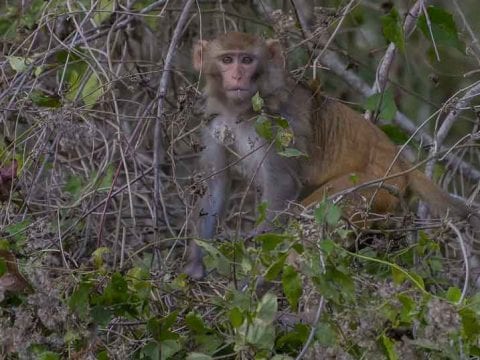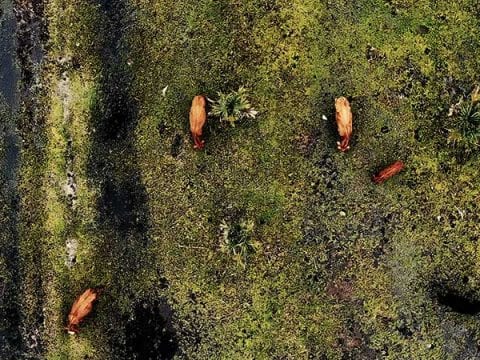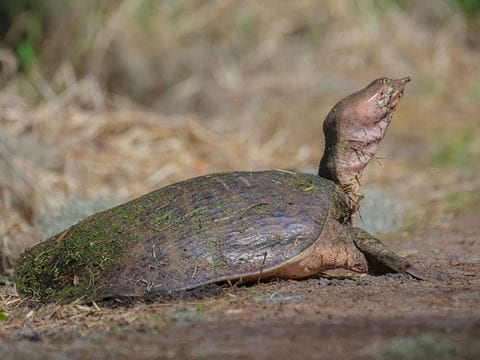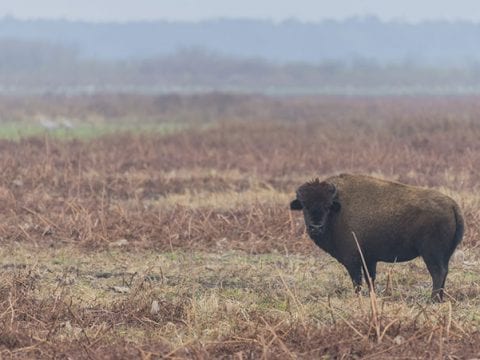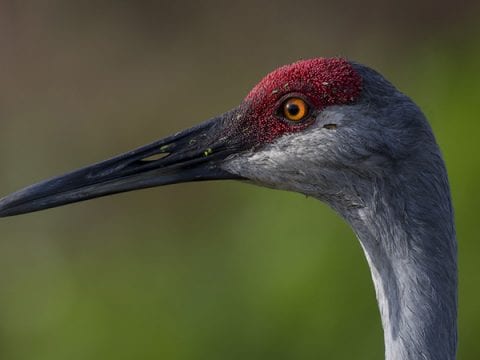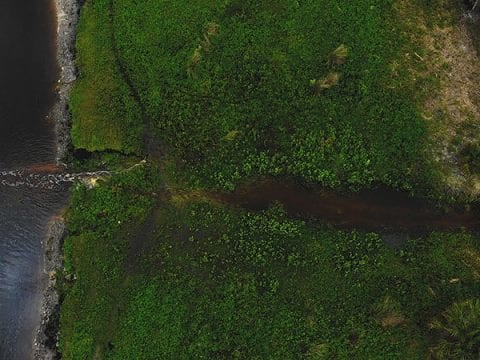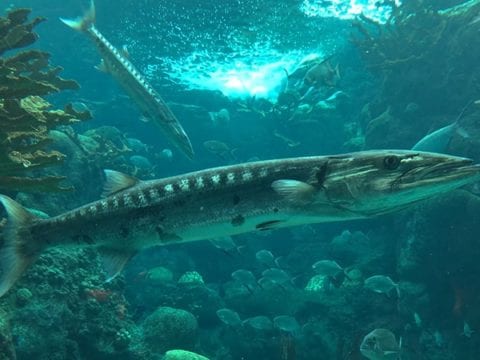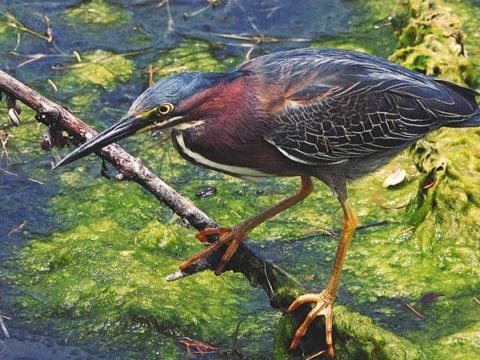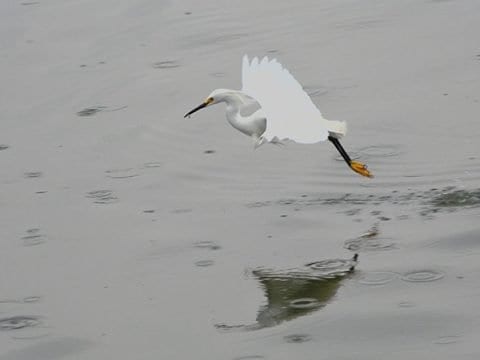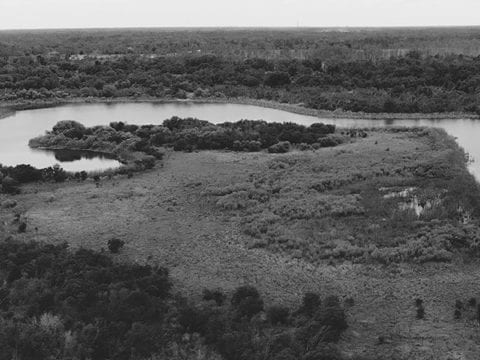Table of Contents
I have a local hiking spot down the road where I can sit on a bridge and watch the red eared slider turtle swimming below me. Last week, I hiked up and found 2 red eared slider turtles with one on either side of the bridge. They seemed to have lost each other and were looking hard for the other. Here is a video of 2 red eared slider turtles from my hike that day and some facts along with the 4K wildlife video.
Red Eared Slider Turtle Facts
- Scientific name: trachemys scripta elegans
- Red-eared Sliders are the most common aquatic turtles in Texas
- They are really great swimmers
- Red-eared Sliders do not like to be handled and will bite if they feel afraid
- A turtle shell is made up of jigsaw ribs called scutes that are covered with a thin layer of skin
- They replace their individual scutes as they grow
- While Red-eared Sliders have poor hearing, they are very sensitive to vibrations and communicate through those vibrations and touch
- Their name comes from their quick reaction when they feel threatened, they can easily slide off embankments, logs and rocks
- According to Native American stories, the turtle is sacred and was never killed. It is said that the 13 pieces that make up a turtle shell represents thirteen moons a year.
- Whether a Red-eared Slider will be a female or male is determined by the temperature during development
- They can live 20-40 years
- They are considered among the world’s most invasive species according to The Humane Society
Identification
Red eared Sliders originated from North America and are named for the red streak on their face and the ability to slide out of danger quickly. Deciding whether a turtle is a boy or girl is easier when they are adults, compared to when they are young. The shells of a mature male are much smaller than a female shell. A male slider will reach sexual maturity when their carapace measures 10 cm in diameter while a female will reach sexual maturity when her carapace measures 15 cm in diameter. This is usually when the turtle is five to six years old. Males have longer claws in their front feet than females do which allows them to hold on to a female during mating. It also used during courtship displays. The male’s tail is also thicker than a female’s as he has a retractable penis inside his tail.
Older male turtles sometimes have a dark greyish-olive green melanistic (excessive production of melanin buildup) coloration with passive markings on them. The Red-eared Slider is popularly known for its dark green oval shells marked with yellow and the red stripe down its face. Their neck, head, and legs are marked with greenish-yellow stripes.
Size
Length
- 7-9 inches on average, some females grow 10-12 inches
Weight
- 2 pounds
Behavior
Red-eared Sliders are very active turtles who love swimming. Many people keep this particular type of turtle as a pet and they learn to associate with their owners to food and will grow more responsive once they recognize that their owner has entered the room.
Red-eared Sliders are aquatic creatures who love basking in the sun. The exposure to sun allows them to get rid of parasites. Some of their predators are minks, otters, raccoons, and other medium-sized animals so they slide down embankments, stones or logs to get away from danger. This is where part of their names comes from. The other part of their name comes from the red mark that goes down their face.
Reptiles do not hibernate but they do brumate, this means that they become less active and only come out for food and water. This happens during the winter months.
Habitat
Because reptiles are cold-blooded animals, they spend a lot of their time sunning on rocks and legs. Red-Eared Sliders can be found basking in these areas too. Sometimes, if there are not enough rocks or logs for all the turtles to be on they will stack themselves on one another. Sliders will bury themselves in mud or loose soil in the wintertime in an effort to escape frigid temperatures. When a turtle’s area becomes overly populated, it will move across bodies of water to find food and space somewhere else.
They can be found in slow-moving water sources that have a mud bottom. They live in marshes, ponds, lakes and rivers. They can be found all throughout the United States as they are a very common bread of turtle.
Diet
They eat decaying material, aquatic plants and small animals like snails, tadpoles, worms, crayfish, fish and crickets. They do not have teeth. Instead, they use their serrated, sharp ridges in their upper and lower jaw to eat their food.
Some people keep Red-eared Sliders as pets so they will feed them super worms, rosy red minnows, mice, turtle food pellets, earthworms, goldfish, freeze-dried shrimp or krill, crickets, squash, carrots and leafy greens.
Red Eared Slider Reproduction
Mating
Males have long toenails on their front feet that they use when trying to court females. Males will swim backward in front of a female and fan water over their faces. Breeding season lasts from late spring to early summer and mating happens between March and July. Mating takes place underwater but nesting takes place on land.
Eggs
Females choose a nice area where the sand is cool, the soil is rich and has a lot of exposure to the sun for their nest. The nest is dug with a turtles hind feet and is about 200 meters from water, on average. The nest is no deeper than 10-12 centimeters. When female turtles are ready to lay eggs (2-30 eggs at a time) they will dig a hole in the ground, drop them into the hole and leave. The eggs are very soft and they are fertilized by being buried in the sand.
Younglings
After hatching, younglings have to take care of themselves. Younglings look identical, no matter their gender so it can be hard to identify them. The gender of a turtle can be determined by inspecting the markings that lie beneath their carapace. However, these markings will fade as a turtle ages. The gender of a turtle is determined during a phase known as embryogenesis which depends highly on incubation temperature. Embryogenesis depicts gender because reptiles lack the sex chromosomes needed that determine gender. For eggs that are incubated at 22-2 7 degrees Celsius, the eggs will hatch into males. Eggs incubated in warmer temperatures will result in female turtles.
Equipment Used
Camera Gear
- Sony FDR-AX100
- Manfrotto Tripod
Software
- Premiere Pro CC
LUT
- Cinespace

